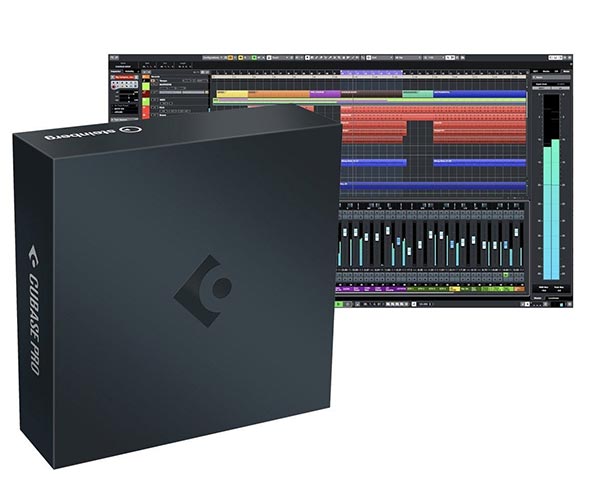Cubase 10.5 for Creative Music Production

Steinberg has launched the newly released versions of its award-winning music production system, Cubase 10.5. It combines sophisticated audio/MIDI tools with pristine audio quality to deliver one of the most advanced DAWs today.
The Cubase 10.5 provides new features and enhancements to its Pro, Artist, and Elements editions. Cubase covers a vast range of applications, comprising state-of-the-art technologies and a comprehensive feature set ideal for composing, recording, editing, and mixing music; with its full scale of powerful features readily available in the Pro edition and downscaled in the feature selection in Artist and Elements in order to be used by beginners and professionals alike.
Professional features for professionals
Cubase Pro 10.5 comes with several exclusive features that are not included in Cubase Artist and Cubase Elements. Spectral Comparison EQ is one of them. It is a new mode in the Channel EQ that allows users to compare the spectral components of two audio signals in order to adjust and bring balance to the mix.
Import Tracks from Projects is another completely revised feature, making track import from other Cubase projects as simple as it gets. Additional track types, such as Group, FX, and Folder Tracks, can be selected and imported as well, while the Auto Map function aligns imported tracks with the same name as existing ones.
Cubase is the go-to DAW for scoring to picture, and with Video Export Render the capability to work with video excels to the next level. With 10.5, users of Pro, Artist, and Elements can now export time coded MP4 video including 44.1 kHz or 48 kHz/16-bit audio.
Instead of normalizing by dB FS Max, Cubase Pro 10.5 now offers an alternative. Pro users can normalize with the Loudness Unit Full Scale (LUFS).
Release highlights for all
With Padshop 2, Cubase Pro and Cubase Artist now also boast beautifully designed and unique-sounding granular and spectral synthesizer with more than 570 presets and 570 pre-produced samples, allowing users to import and redesign their own samples.
MultiTap Delay is the latest effects processor to be added to Pro and Artist, providing a creative approach to creating and editing delay, with different presets and numerous parameters ensuring the utmost flexibility.
Especially useful in projects with a high track count, Colorized Mixer Channels is a new option in the MixConsole that colorizes complete channels and provides an easy overview.
Another workflow expeditor is the Combined Select Tools mode, newly implemented in Cubase Pro and Cubase Artist. By switching into this mode, both selection tools for objects and ranges can be used together, making track editing even easier in Cubase.
Retrospective MIDI Record has also been revised, now allowing users to retrieve MIDI chords and melodies that were never recorded, placing them as a stacked cycle or continuous across individual tracks.
Cubase Pro 10.5 now includes many additions and refinements to its Score Editor, such as the available Note Ruler when inserting and moving notes or the new Graphic Snap for easy positioning of rests and repeat markers in the score.
Apart from the various highlights presented in Cubase 10.5, the Macro creation window in Cubase Pro and Cubase Artist has been improved; Cubase Elements 10.5 now complements its plug-in chain with the included Stereo Delay, De-esser and Roomworks signal processors, previously only available in Cubase Pro; and three editions also include many refinements that improve the graphical performance and overall workflow.
Steinberg’s Senior Marketing Manager for Cubase, Matthias Quellmann, commented: “With this point five update we put a strong focus on improving the entire workflow and expanding the creative toolset based on the feedback of our global user community. You get many new, very useful features across all three editions, and at the same time, you also get an array of improvements to existing features, making the overall experience with Cubase even more streamlined, more enjoyable, simply the best possible we think you can get from a DAW.”